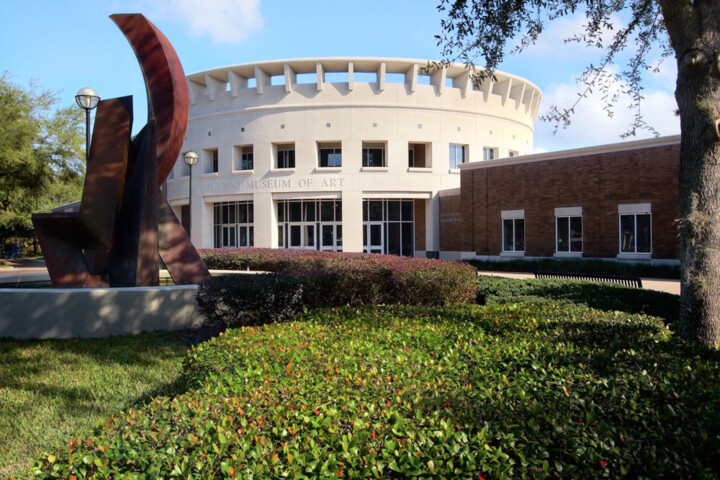 Orlando Museum of Art – Orlando, Florida, USA via wikipedia
Orlando Museum of Art – Orlando, Florida, USA via wikipedia
The Basquiat fiasco caused dimensions
The Federal Bureau of Investigations (FBI) raided the Orlando Museum of Art in Florida last June. They took all 25 paintings in the Heroes & Monsters: Jean-Michel Basquiat, the Thaddeus Mumford, Jr. Venice Collection show because they thought they might be fakes. The exhibition was basically shut down by the raid, and now the American Alliance of Museums (AAM), of which the museum has been a member since 1971, has put the museum on probation, which threatens its accreditation. Shortly after the raid, Aaron De Groft, the director and CEO of the Orlando museum, was fired by the board of trustees. In December, Cynthia Brumback, the chairwoman of the board, was also forced out of her position. All of this seems to have happened because of the Basquiat fiasco, which embarrassed the institution and made people question its practices.
The museum put on probation
A spokesperson for the AAM said that the length of probation is not a set amount of time, but instead depends on "the museum's particular compliance issues" as decided by the association's accreditation commission. It doesn't happen often, but sometimes a member institution is put on probation. The spokesperson says that less than 1% of accredited museums are on probation at any given time. "It depends on the situation" what a museum needs to show this commission to get off probation. When the public heard about the 25 works of art for the first time in 2012, when the museum said it would show them, doubts about their authenticity grew a lot. The paintings were done on cardboard, which fits with Basquiat's style, but that kind of cardboard didn't become popular until 1994, six years after the 27-year-old artist died. A TV writer named Thad Mumford bought all 25 paintings, which he said were made in 1982, for $5,000 and kept them in a rented storage locker. After Mumford didn't pay the locker's rent, the paintings were found again in 2012 and sold to a number of collectors. These pieces were then loaned to the Orlando museum.
The museum risks losing its accreditation
It is a federal crime to sell fake art on purpose, which is why the FBI was looking into these works of art and where they came from. The agency had asked museum officials for information about these paintings, but they didn't answer. The museum then paid an expert on Basquiat, Jordana Moore Saggese, an associate professor at the University of Maryland, $60,000 to look at the paintings to see if they were really by Basquiat. At first, Saggese said that some of the paintings were by Basquiat, but not long after, she told the museum staff that she had changed her mind and did not want her name to be connected to the show. According to an FBI affidavit, the museum's director, De Groft, was angry about her request. He sent her a threatening email that said, "You want us to say you got $60,000 to write this? All right. Shut up. You stole the cash. Stop acting more holy than you are."
If a museum loses its accreditation, it might be harder for it to borrow things from other places. However, since the two top officials at the Orlando museum at the time of the Basquiat mess have been fired, this seems unlikely. The AAM is not a group that does investigations, so it will have to rely on what the FBI finds and what the next group of museum officials in Orlando says they will do to clean up bad practices. Mark Elliott, the museum's new board chair, said in a statement, "We are working with the AAM to remove our probationary status, and we expect to stay in good standing."


 Selena Mattei
Selena Mattei